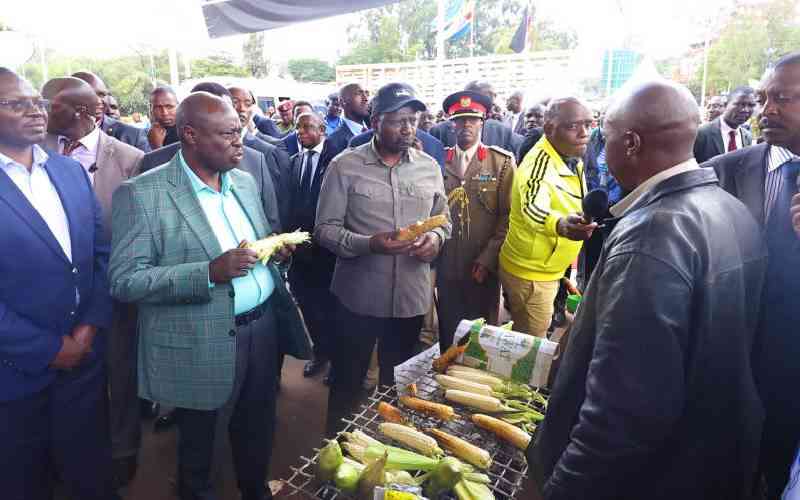By Grace Wekesa
Sleek architectural designs are what best define the city of Doha in Qatar, which is one of the richest countries in Middle East. The artistic, elaborate and luxurious touches in the architecture are symbolic of the oil and natural gas money that drives this Arabic economy.
The religious beliefs in this part of the world not only influence the culture, but also the design and finishing of the city’s buildings. Islamic architecture is evident in the domes, decorative calligraphy and central fountains found in many buildings. Mosques featuring precious metals and stones, highly decorated surfaces and exquisite stained glass windows can be seen every few hundred meters.
Doha is a five-hour journey from Nairobi. The climate is generally hot, with temperatures hitting 40 degrees Celsius and even more in the hottest months around May to September). This is probably why families have beach outings at night.
Luckily, I arrive at Doha International Airport early in the year, when temperatures are in the 20s.
We land at 10pm, and though darkness is what one would expect at that hour, I soon discover this is no ‘ordinary darkness’, for night falls in Doha at 5pm, and the sun rises at 4.30am.
Official working hours in government offices are between 7am and 2pm, Sunday to Thursday. Banks are open from 7.30am to 1pm. Early afternoon siestas are greatly valued, so, after lunch, Doha resembles a ghost town.
Friday and Saturday are considered weekends, and Christians attend services on Friday, the same day Muslim faithful go to the mosque.
The trip from the airport to the hotel is smooth as the road network in the country is impeccable. However, most of the scenery comprises of built up areas and desert landscape. There are no trees, grass or other types of plants in most of the city, and what little greenery I see is mostly bougainvillea and palm trees.
Following Qatar’s discovery of oil in the early 1930s, the country embarked on a period of growth fuelled by its newfound wealth. Most of its historical buildings have been constructed near the ocean, resulting in an awe-inspiring cityscape, and attractions that draw numerous tourists every day.
Pearl diving is one of Qatar’s most famous cultural attractions. Before the discovery of the oil resources, diving for pearls was one of the major income earners in the Middle East. Nowadays, however, it is more a celebration of traditional culture, the climax of which is the annual Qatar Marine Festival.
Doha’s architectural marvels make use of natural materials, especially Qatari stones and the bountiful elements of sun and wind.
Qatar Foundation, Msheireb Enrichment Centre (Mec), Qatar Museum of Islamic Art and Qatar National Conventional Centre (QNCC) are some of the historical paces I managed to visit during my four-day stay in Doha.
Mec is a floating education and community facility that is a great example of the innovation and technological advancement visible everywhere in this magnificent city. It is also a landmark destination that showcases Qatar’s past, present and soaring ambitions for the future.
Manager Hamad Mohammed al Naimi informs us that the country’s rich heritage is narrated at the centre through the use of imagery.
Stay informed. Subscribe to our newsletter
“This centre is one of the city’s oldest landmarks, and it has clearly captured our past, present and future. It houses Qatar’s historic artefacts, antique tools and a treasure trove of information on our country’s extraordinary growth. Qatar has achieved a lot in a short time,’’ says Naimi.
“We are championing causes in education, science, architecture, information, heritage, technology and economy. New boundaries are being explored, and existing benchmarks stretched towards goals in line with the nation’s Vision 2030.”
The Museum of Islamic Art showcases a significant collection of Islamic art and artefacts, with pieces from Spain, Egypt, Iran, Iraq, Asia and India. The objects in its permanent gallery include ceramics, textiles and manuscripts.
Drawing its inspiration from ancient Islamic architecture, the design of the museum also includes intriguing elements of modern design. The institution was opened in 2008, and also houses an education wing with a research library, an auditorium, a gift shop and several restaurants.
As expected in a country dominated by people of the Muslim faith, women are conservative in their dressing, and cover the entire body apart from the face. Men also mostly wear traditional white robes, and a turban on the head. Expatriates are, however, allowed to dress differently.
Strong family values help to maintain strong social bonds. Divorce is frowned upon, and community interventions are the preferred mode of dealing with domestic wrangles.
Qatari traditional food is rich in Indian, Iranian and African influences. Popular dishes include shawarma, lightly spiced and grilled chicken or lamb, rolled in a chapatti-like bread, and served with a salad, pickles and lime juice. All meat is halal, meaning it is prepared in accordance with Islamic law. Machbous is a dish of spiced rice with meat and seafood, usually served in a communal platter.
Also popular are hummus (a chickpea dip), ghuzi (a whole roasted lamb served on a bed of rice and nuts) and waraq enab (vine leaves stuffed with rice). Desserts are mostly puddings, such as mehalabiya, which is made of rose water and pistachio nuts.
Alcoholic drinks are rare to come by, mostly owing to the fact that there are strict alcohol regulations. Expatriates have their parties involving alcohol indoors, with strict requirements not to cause disturbance during those occasions.
 The Standard Group Plc is a
multi-media organization with investments in media platforms spanning newspaper
print operations, television, radio broadcasting, digital and online services. The
Standard Group is recognized as a leading multi-media house in Kenya with a key
influence in matters of national and international interest.
The Standard Group Plc is a
multi-media organization with investments in media platforms spanning newspaper
print operations, television, radio broadcasting, digital and online services. The
Standard Group is recognized as a leading multi-media house in Kenya with a key
influence in matters of national and international interest.
 The Standard Group Plc is a
multi-media organization with investments in media platforms spanning newspaper
print operations, television, radio broadcasting, digital and online services. The
Standard Group is recognized as a leading multi-media house in Kenya with a key
influence in matters of national and international interest.
The Standard Group Plc is a
multi-media organization with investments in media platforms spanning newspaper
print operations, television, radio broadcasting, digital and online services. The
Standard Group is recognized as a leading multi-media house in Kenya with a key
influence in matters of national and international interest.









